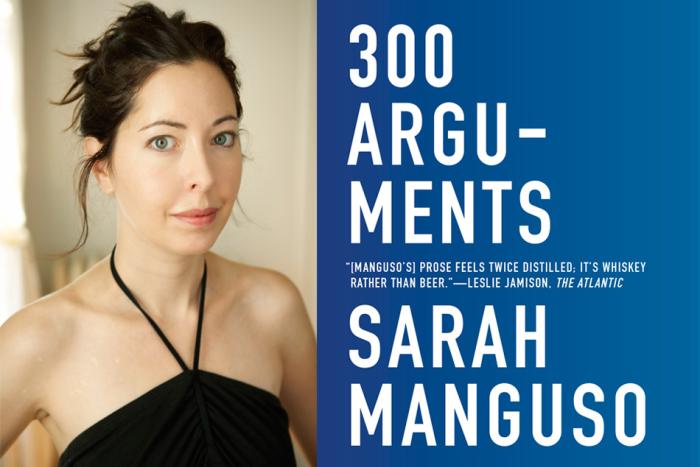Eric Cazdyn, a professor of literature and East Asian studies, is a long-time patient at the Princess Margaret Cancer Centre. The hospital is a short walk from his office at the University of Toronto. He’s been coming here every one to six months or so since 2001, when he was diagnosed with a form of leukemia for which the first-line treatment is neither chemo nor radiation, but a pill. The medication, Gleevec, was approved the same year, and, with a ninety-percent response rate in its first trial, was hailed as a miracle drug. It works at the molecular level, targeting the specific mutated enzyme that gives rise to overproduced immature white blood cells that would overrun his body and keep it from producing the other blood cells he needs to stay alive. Taken every day, the pill stops production of the cancer cells altogether, and promises to keep his illness in check for the foreseeable future, perhaps indefinitely.
“It’s interesting, cancer care is usually, to some degree, organized around the short-term,” he told me when we spoke in his west-end Toronto neighbourhood. “A lot of Western medicine is about symptom management in the short-term.”
When Cazdyn was first diagnosed, his illness was not a long-term one: previous treatments pinned his life-span at five to ten years. But with Gleevec’s revolutionary arrival, the terminal illness was transformed into a chronic one—not curable, but almost certainly manageable.
In Canada, Gleevec costs about $50,000 a year. Current research claims that people taking the drug can have a normal life span, that they’ll die of something else. As a medical student, I hear colleagues and supervisors enthuse about the new fleet of hyper-targeted drugs—exemplars in the pharmacologic movement of “Rational Drug Design”—that have transformed the treatments for cancers, autoimmune diseases, and HIV. The medical discourse surrounding these drugs is unquestioningly positive. And why shouldn’t it be? From the patient’s perspective, a life-long prescription is often better than a death sentence.
The biomedical argument in favour of management frames chronic illnesses as more bearable, even enviable when placed in a hierarchy of sickness. An article by the former pharmaceutical researcher James Vermilyea and colleagues confidently stated: “As researchers unravel the molecular basis of an illness, manufacturers increasingly turn incurable diseases into merely chronic ones.” Gone would be the acid scene of wigs and IV drips, replaced by the bland routine of a pill taken every day at meal time.
Cazdyn considered this medical paradigm shift in his 2012 book The Already Dead: The New Time of Politics, Culture, and Illness. He called it “the new chronic”: a system in which the utopian concepts of cure and revolution have been erased by the more practical need to stabilize.
The new chronic, the book argues, “extends the present into the future, burying in the process the force of the terminal, making it seem as if the present will never end.” It kills the drive for cures and imagined new solutions, rendering us inhabitants of that perpetual present, the “already dead.” The conditions of contemporary capitalism that favour management over cure extend beyond illness and into social struggle: Instead of fighting for revolution, the new chronic leaves us instead to fight to maintain the status quo. It’s the same logic that encourages the most marginalized to make do in a system positioned against them, rather than question the historical and social conditions that left them disadvantaged in the first place.
That is to say, to call a disease “merely chronic” implies a kind of dismissal. The chronic becomes a leftover, a meantime that doesn’t merit worry; we lack the emotional bandwidth to know how to react to something that will last for so long. Our hospitals are organized around acute symptoms, with no material way of acknowledging the periods of time in between and beyond. Employers and insurers run away from or ignore the chronic—it’s a liability, a sinkhole for profit. Perhaps to all of us, there’s something disturbing about the unpredictability of something so constant.
“There are these narratives [people] need to put [illness] in,” Cazdyn told me. “It’s dire, it’s acute, it’s life-threatening—or it’s nothing to worry about. People are good at dealing with those moments of intensity, but they can’t sustain it, and then they don’t know what to do when it’s not one or the other.”
Even at their most unsettling, people often know what to expect from visible instances of sickness, but life expectancy, treatment duration, hope for the future—all of these cut across the spectrum of illness, crudely dividing the acute from the chronic, intensive care from routine management. For those whose illnesses are chronic but managed, life becomes a liminal space between not-quite-healthy and not-quite-sick, where health is contingent on a daily regimen of extra tasks designed keep the body in check.
“At what point do you stop talking about it?” Cazdyn asked. “You keep going to the clinic, and you keep taking the drugs. People don’t want to hear about it, but it’s still very much part of your life. Everyone must feel that in different ways.”
*
Ahmed was twelve years old when he was diagnosed with ulcerative colitis, a form of bowel disease that involves inflammation of the colon. Despite having had a chronic illness for eighteen years, though, he doesn’t see himself as sick. It’s only when his symptoms—stomach cramps, fever, diarrhea, and rectal bleeding—manifest, typically in an annual flare-up, that he’ll take on the label.
“I’m used to it,” Ahmed told me, slightly resigned. “Yeah, I’m frustrated that I get sick more often than people. But I know how to handle it, and I’ve learned how to best advocate for myself in the medical system, through my repeated encounters with it.”
Chronic illness forces a constant uncertainty onto the people who live with it. Sociologists call it “biographical disruption”—the loss of certainty about the future, and about taken-for-granted assumptions, in the face of a diagnosis. The only guarantees are usually the ones you’d rather not hear. (People with ulcerative colitis are told by their doctors they’ll almost definitely develop colon cancer before age fifty.) Ahmed has been hospitalized three times for conditions related to his flare-ups, which have become more regular in recent years despite the daily medication regimen designed to manage his symptoms. His illness has no cure, and his dose of the drug is ongoing.
“It’s something that I think people who don’t get sick very often might take for granted—that their body is always theirs wherever they go,” Ahmed said. “But once you check into a hospital you sign away … not the ownership of your body, but the control over it.”
The lifeworld of chronic illness varies from person to person. Michelle is a student in her mid-twenties, who manages two long-term conditions along with full-time school and part-time work. Six years ago she was diagnosed with bipolar disorder, which the psychiatric community considers a chronic mental illness, and which is marked by episodes of depression and mania. More recently, she was also diagnosed with inflammatory arthritis, a chronic autoimmune disease involving painful joint swelling, stiffness, and damage that can limit her mobility.
“It’s funny,” she said, nearly echoing Ahmed’s sentiments, “as someone with two chronic conditions, I don’t really see myself as someone who is going to be sick for the rest of my life. I don’t even feel like a sick person. I feel like a well person.”
Still, she remembers periods after hospitalizations when returning to work was almost unbearable. Co-workers tried to pry into the reasons for her absence, all too curious to hear about a long unexplained hospital stay.
“With bipolar disorder there has been an ongoing anxiety about whether I will be sick any time soon,” she said. “And so I have to pay attention to my thoughts in a way that I never did before, and in a way that a person who is well may not have to.”
*
Daily acts of negotiation are a routine but often invisible part of managing a chronic illness. They can vary from something as seemingly minor as the monitoring of one’s mental state to the tracking of symptoms, the planning of routes to find the one with the fewest stairs, the taking of drugs, and, often above all else, the act of managing drug side effects.
While drugs taken for short periods are comparatively simple to track, chronic drug regimens introduce a dimension of uncertainty in reading one’s own body. There’s a strangeness to not being able to tell whether a symptom manifests itself because of the illness, because of the drugs, or simply because of the unexplained idiosyncrasies of the human body.
Ahmed’s been taking medications for more than half of his life; side effects, he said, are just his “normal state.” Michelle has had to get used to a crescendo of drugs since her late teens to manage her conditions. Every night, she takes nine pills, except on Sundays when she takes nineteen. They make her feel like herself, she told me. She was satisfied with her current drug regimen, although in the past, medications she took for bipolar disorder included side effects such as weight gain, increased fatigue, and feeling “disconnected from reality.”
“I think I’ll probably be taking medications forever,” Michelle said. “But I’m not so upset about that.” Still, she says, it doesn’t feel great to be dependent upon things.
Beyond the day-to-day, staying on medication in the long-term forces newer, heavier conversations. One booklet outlining drugs for bipolar disorder provided by the Centre for Addictions and Mental Health explains commonly raised issues, like cutting down one’s dose, or taking medication while pregnant:
“For any pregnant woman with a history of bipolar disorder, the question of taking mood stabilizers during pregnancy usually comes down to a risk-benefit analysis. All mood stabilizers carry some risk—some more than others; however, episodes of depression or mania can affect prenatal care and a mother’s ability to parent her newborn child.”
The language of risk has a sterilizing effect when applied to real life. “Risk-benefit analysis” can’t convey the emotional weight of a decision to maintain or go off medication, to prioritize your own health over your child’s, or vice versa. Similarly, the decision to cut down one’s dose must take into account any current stress, the risk of relapse, one’s relationships, occupation, and future.
In his 2012 book, Drugs for Life, the anthropologist Joseph Dumit describes the state of “dependent normalcy”—a state of relying on medication out of fear of relapse. “But normalcy is now truly in quotation marks,” Dumit wrote, “because it is now threatened with a series of dotted lines that indicate the dangers of going off the medication at any time.”
“I’m not really itching to get off my medication,” Michelle said. “You might say, ‘Well, you never really know what all the long-term effects of all these chemicals are that you’re putting into your body. Would it be better to be off them?’ But with something like bipolar disorder, I think I’m more comfortable being on them, sort of as a safety situation.”
Eric Cazdyn described the side effects of his medication as alien elements in his body. But as someone whose medications keep his life-threatening illness in remission, his main preoccupations have to do with what seem, by comparison, to be smaller, more immediate things; the pamphlet contained in each thirty-tablet box of Gleevec largely describes the drug’s side effects, from the “very common” (weakness, spontaneous bleeding or bruising, frequent infections) to the “rare” (vision impairment, seizure). But Cazdyn also shares waiting rooms with people whose cancers can’t be tamed by a daily pill. To them, cancer care still finds a better fit with war metaphors, where treatment can be just as dangerous as the disease itself. And to the clinicians treating every patient in that waiting room, a disease in remission with a daily medication sounds minor in comparison.
But when health professionals treat an illness like it’s a minor inconvenience, patients are expected to mirror that impression. They don’t get the chance to frame their experiences in their own terms, and as a result, they can’t necessarily express feelings that would have otherwise come naturally. In a cancer-care environment, Cazdyn is expected to consider himself lucky that this is the worst thing he has to think about.
“That’s always the hard part about everything being so centered on the high stakes of an illness, where you’re not allowed to become ridiculously neurotic about the small stuff,” Cazdyn said. “It sounds rich to be able to complain about your puffy eyes when you’re taking this life-saving medication.”
*
The latest class of miracle drugs, called immunotherapies, is poised to join to the ranks of targeted drugs for cancers, autoimmune diseases, and HIV—medications that can’t cure those diseases, but make them more liveable. They’re designed to activate the body’s own immune system to attack tumour cells in skin cancers and lymphoma. With their increased use, the familiar success narratives have cropped up in conferences and journals, newspapers and stock portfolios—the same legend of scientific ingenuity repeating itself, of people who once faced disability or death but can, at least for now, live a longer and higher quality life. And these drugs are, of course, something to celebrate.
But in these narratives, we miss the stories of people who have still faced, in their own ways, a loss of health. Their incurable yet manageable illnesses leave them in a kind of limbo, caught between maxed-out insurance policies, questioned sick leaves, disability claims, and a system that can’t accommodate the unpredictability of being not-exactly-healthy and not-quite-sick. The longer a chronic condition lasts, the easier it is to forget that people lived different lives before they became ill—that they had expectations and hopes for the future, and habits that weren’t yet regulated by the demands of a disease that forced them to re-evaluate and recalibrate.
“When I was first diagnosed with bipolar disorder, I dreaded the future with every part of me,” Michelle said. “I mean, this is a part of bipolar disorder, and a part of coming down from a mania—but it was apocalyptic. My vision of what the world had in store for me, or what I had to offer the world in the future, it was disastrous. It was very painful to think about.
“And then as time went on and as I learned to better cope with my manic episodes, that vision became less gloomy, and more realistic. Still with its difficulties, but definitely not a disaster.”
Any attempt to universalize the chronic falls short—ignoring not just the intricacies and nuances of each individual body, but also how much race, class, gender, and geography shape how we accept or access treatment. There is no one-size way to digest a diagnosis into something the body can deal with. The point is not to find some universal explanation—but to trace where our modes of dealing with chronic illness have failed.
Stretched over each illness is an environment that turns treatments into commodities, and uncertainty into liability. It’s a logic of capitalism that makes life-long prescriptions worthy research investments, and the resulting paradigm of management the symbol of scientific progress.
What, then, would a better way look like? Stuck in this new chronic regime, as Cazdyn calls it, it’s hard to imagine an alternative to the utopian promise of cure; it feels like a betrayal to seek reform over revolution. But we have always had the capacity to listen—an ability that can radically displace existing relations of power. I see the missed opportunities for change in the uncritical stories we tell about scientific progress, that fail to track what’s left in the wake of progress. I see them in my MD training, where I’m taught the minutiae of diseases, but not what it’s like to live with them.
I imagine what it would have been like to have Cazdyn, and not an oncologist, teach my first class on chronic leukemia. I think about how Ahmed’s hospital stays might have been less alienating if the spaces and services he uses had been designed by fellow patients. And I wonder whether the best reassurance for Michelle, early on in her experience with bipolar disorder, would’ve been another person who’d experienced mental illness and who could offer support.
There are already spaces in healthcare where these shifts are happening—mostly notably in mental health, where peer support workers (people who have lived experience with mental illness) have begun taking central roles in providing care and medical teaching. It’s a shift that makes us listen to new critical voices who can imagine what others can’t. They can envision ways of living and caring for one another that one day will become obvious, but only in retrospect. The new chronic regime might underwrite a system convinced of its own endurance, but it may also inspire revolt.






